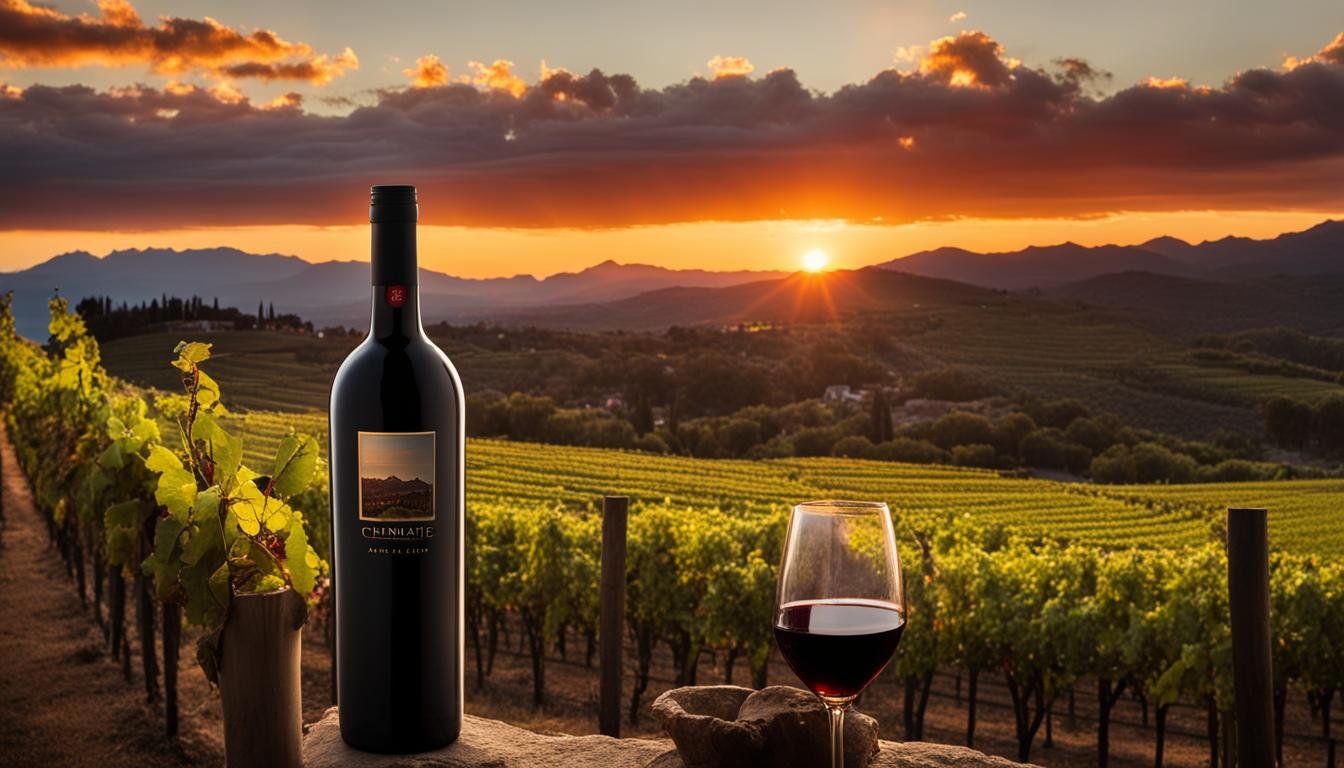Malbec: The Bold Adventurer of the Wine World
Introduction
Malbec (pronounced “Mahl-bek”), is like the Indiana Jones of the wine world – robust, adventurous, and undeniably charming. Originally from France, it found fame and fortune in the sun-drenched vineyards of Argentina. Malbec is the grape that puts on a show – deep in colour, rich in flavour, and never shy about making a bold statement. It’s the wine you turn to when you want a glass filled with character and a hint of daring.
Primary Flavours
Tasting Malbec is like diving into a pool of dark fruits. You’ll encounter flavours of juicy blackberries, plump plums, and ripe cherries, all wrapped up in a velvety smooth texture. As it waltzes across your palate, expect hints of vanilla, tobacco, and even a dash of cocoa. In warmer regions, it might throw in a surprise with a touch of spicy black pepper. Malbec doesn’t just tickle your taste buds; it gives them a bear hug.
Taste Profile
| Malbec | ||
|---|---|---|
| Aspect | Rating out of 5 | Characteristic |
| Sweetness | 🍷 | Predominantly dry, with a hint of dark, ripe fruits |
| Body | 🍷🍷🍷🍷🍷 | Full-bodied, as rich and profound as a tango dance |
| Tannins | 🍷🍷🍷🍷 | Robust, like the grip of a leather gauntlet |
| Acidity | 🍷🍷🍷 | Moderately high, adding a lively zest to its depth |
| Alcohol by Volume | 🍷🍷🍷🍷 | Typically around 13-14%, as warm as an Argentine sunset |
| Each wine glass icon 🍷 represents one point on a 5-point scale. Malbec is celebrated for its plush texture, dark fruit flavors, and sometimes spicy or earthy undertones. It's a popular choice for its richness and intensity, and is a star in regions like Mendoza, Argentina, and Cahors, France. |
Growing Regions
Malbec is a grape that loves the spotlight and thrives under the sun. While it’s originally from France, particularly Cahors where it’s known as “the black wine,” its true calling was found in Argentina. Here, particularly in regions like Mendoza, Malbec found its perfect match in the high-altitude vineyards, basking in the ideal combination of sunny days and cool nights. This grape has also made a name for itself in Chile, Australia, and even back in its French homeland, each region adding its own twist to the classic Malbec tale.
Origin
Malbec has a backstory worthy of a novel. Its roots can be traced back to the Bordeaux region of France, where it was just one of the many grapes in the blend. But it was in Cahors, the region often overlooked by its more famous neighbour, where Malbec really found its feet.
However, it wasn’t until Malbec emigrated to Argentina that it truly became a global superstar. It’s a grape that’s not just travelled; it’s evolved, adapted, and flourished, turning its story from a supporting role into a lead character.
Ideal Serving Temperatures
Finding the right temperature to serve Malbec is like tuning an instrument – it needs to be just right. Serving it at about 16-18°C (61-64°F) allows the wine to express its full range of flavours without being overpowered by alcohol. At this temperature, Malbec’s fruity profile and velvety tannins are in perfect harmony, making each sip a well-orchestrated symphony of taste.
Glassware
Choosing the right glass for Malbec is crucial for its full performance. A glass with a wide bowl is ideal, giving this robust wine enough room to flex its muscles. This shape allows for ample aeration, helping to soften the tannins and release the complex bouquet of aromas.
The wide bowl also ensures that the wine lands on the right areas of your palate, highlighting Malbec’s rich fruit flavours and smooth texture. It’s like providing the perfect stage for a rockstar – where Malbec can truly unleash its charismatic performance.
Considerations for Decanting
Decanting Malbec can be as dramatic as a scene from a Shakespearean play – it adds depth and character. While young Malbecs are ready to drink and don’t necessarily need decanting, the more full-bodied and aged Malbecs can benefit from this process.
Decanting helps to soften the wine, mellowing any harsh tannins and allowing the layers of flavour to intermingle and evolve. It’s like giving the wine a chance to stretch its legs after a long journey, ensuring that by the time it reaches your glass, it’s showing its best and most approachable self.
Complementary Food Pairings
Pairing Malbec with food is like finding the perfect dance partner – it’s all about matching the rhythm and pace. Its bold flavours and full body make it an ideal companion for equally hearty dishes. Grilled red meats, robust stews, and spicy sausages are classic pairings, where Malbec’s robust character can stand up to the richness of the food.
For a vegetarian twist, think grilled portobello mushrooms, lentil burgers, or a rich vegetable stew. The wine’s full body and tannic structure make it a great match for dishes with umami and earthy flavours.
Cheese is another excellent pairing for Malbec. Opt for aged varieties, such as mature Cheddar or Gouda, where the richness of the cheese is complemented by the wine’s boldness. Even a blue cheese, with its strong, pungent flavour, can be a delightful match, creating a balance of power and flavour.
Don’t forget about regional pairings – in Argentina, Malbec is often enjoyed with Asado, a traditional barbecue that features a variety of grilled meats. This combination is a testament to the wine’s versatility and its ability to enhance the flavours of the food it accompanies.
Renowned Wine Labels
| Malbec | ||
|---|---|---|
| Country | Wine Label | Varietal Name & Style |
| Argentina | Catena Zapata | Elegant, Complex |
| France | Château de Mercuès | Traditional, Robust Cahors |
| Australia | d'Arenberg | Bold, Fruit-Forward |
| USA | Orin Swift | Californian Innovation |
| South Africa | Ken Forrester | South African Twist, Rich and Velvety |
| These wineries are champions of Malbec, each interpreting the grape in their unique way, from the traditional, robust styles of France to the innovative, fruit-driven expressions of the New World. | These wineries are champions of Malbec, each interpreting the grape in their unique way, from the traditional, robust styles of France to the innovative, fruit-driven expressions of the New World. | These wineries are champions of Malbec, each interpreting the grape in their unique way, from the traditional, robust styles of France to the innovative, fruit-driven expressions of the New World. |
Conclusion
Malbec is more than just a wine; it’s a statement. It combines elegance with approachability, sophistication with fun. Whether you’re toasting a special occasion or just enjoying a Tuesday night, Malbec brings a touch of class to any moment.
So next time you pour a glass of Malbec, raise it high and toast to the grape that brings a dash of suave to every sip. It’s the smooth operator of the wine world, and it’s got a license to thrill.
FAQ
Is Malbec known by any other names?
In France, Malbec is sometimes known as “Côt” or “Auxerrois.” Its different names in various regions reflect its historical journey and adoption in different wine cultures.
To which wines is Malbec similar?
Malbec is similar to Merlot and Cabernet Sauvignon, sharing their full-bodied nature and rich, fruity flavours, often used in blends to add complexity and colour.
Where does the name Malbec originate from?
The name “Malbec” is believed to be named after a Hungarian peasant who spread the variety throughout France. It has various synonyms but is most commonly known as Malbec in the wine world.
What are some interesting facts about Malbec?
• Malbec is a purple grape variety, originally from France, now famously grown in Argentina.
• Known for producing rich, dark wines with robust tannins and berry flavours.
• Popular in the Cahors region of France and Argentina’s Mendoza province.
• Common flavours include plum, black cherry, and hints of tobacco and cocoa.
Which country produces the most Malbec?
Argentina is now the largest producer of Malbec, particularly in the Mendoza region, where it has become the national grape. France, particularly in Cahors, also produces significant quantities of Malbec.
Read the full article about Malbec here!
User Review
( votes)Sip smarter, subscribe now!
Subscribe for gourmet tips, event updates, travel ideas, and a free e-book on Food Pairings. Start your journey to culinary and travel excellence!













